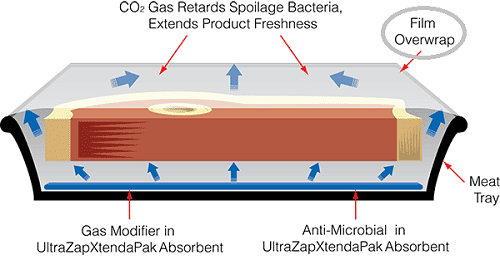Smart meat packaging has undergone a lot of development since its inception. Over the past few decades, innovations and technologies in the packaging sector have led to the development of intelligent packaging systems for meat products (MSPs) that have established a position in a highly competitive food industry.
MSP systems have great potential for improving the shelf life and health of meat products, as well as protecting products from unwanted biological, chemical and physical damage to their health and well-being.
Markers and sensors, components of the MSP, are used to monitor meat quality in real time, and subsequently inform manufacturers and consumers about the freshness, microbiology, temperature and shelf life of products.
RFIDs, which are radio frequency identification tags on smart meat packaging, are used to provide information about the authenticity and traceability of products in the supply chain.
Recently, innovations in SP technologies have led to the rapid, sensitive, and effective detection, measurement, and preservation of freshness, microbiology, and shelf life of meat and meat products. The SP system promises to be widely used in the meat industry in response to consumer appreciation of safe and quality meat products, as well as other benefits of reducing waste.
In this article by Team Vira It has been researched and reviewed, provides an overview of ongoing scientific research, and provides the latest technological advances that provide insights into the development of intelligent meat packaging systems that can detect and monitor physical, microbial, and chemical changes. The contents of the package should be from production to place of sale, consumption and correction of potential adverse reactions.

Meat is one of the main foods in the diet, which contains a high proportion of digestible protein, caloric fat, vitamins and other nutrients. All of these components are essential for the proper functioning of metabolic processes. Global meat production has increased significantly over the past decade and is expected to increase over time.
However, food products of animal origin are most susceptible to microbial contamination and fat oxidation due to their high fat and water content and high quality. Degradation occurs at different levels of the production chain such as preparation, storage and distribution.
The main factors in meat spoilage, freshness and quality of meat products are color, texture and smell. The development of taste is often the result of microbial intervention and is a major factor in assessing shelf life. In general, changes in fragrance characteristics occur before changes in the appearance of products, such as color changes and shape changes. Flavor components undergo decomposition and oxidation reactions. As a result, many products are formed that can react more and lead to a reduction in the molecular weight of the by-products, which are usually responsible for the development of odor and spoilage of meat.
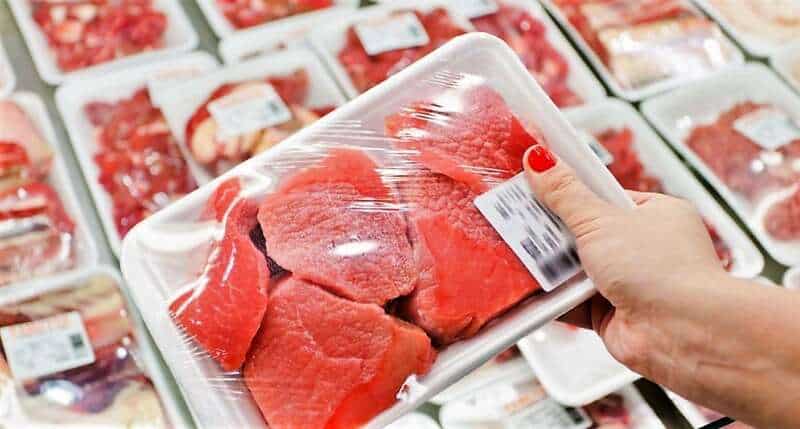
Concepts and principles of smart packaging:
Intelligent packaging has an inherent feature or integral part of the packaging, product, or packaging / product design, which provides the intelligence to identify and monitor the health status of packaged foods during distribution in response to external and internal environments. This helps manufacturers and end users communicate about the safety and quality of the products.
The term smart in packaging includes many functions depending on the type of packaged content such as medicine, beverages, and other foods, which can be referred to as follows:
a. Maintains integrity and actively stops or delays food spoilage, thus prolonging life.
b. Proves quality characteristics such as appearance, taste, texture and mouthfeel.
d. Actively responds to changes in product and packaging environment.
e. Informs customers about product history and conditions.
f. Help open the packing door and show the integrity of the seal.
g. Ensures the authenticity or anti-counterfeiting of the product.
Markers, sensors, barcodes and RFID tags are components used in SP. Indicators can be divided into 3 types:
a. Internal markers that are placed inside the package or closed with a lid, such as microbial markers and air leak markers.
b. External markers affixed to the outside of the package, including physical shock and TTI markers.
d. Indicators that improve the flow of information and communicate effectively with the product and consumers, for example, maintaining specific food product information barcodes, ie expiration dates. This also includes anti-tamper product traceability.
The indicators in SP are called interactive. Because they interact with food components and are used to monitor and communicate about the safety and freshness of food products. The new indicators showed good reliability and stability in terms of distribution and storage.
Similarly, smart labels and tags communicate directly with end users and inform consumers about the safety of packaged products with the help of thin film devices that provide visual information.
The sensors, on the other hand, provide information about the damage to the packaged product and may try to counteract the negative changes that have occurred in food products. These include a receiver and a converter that provide continuous output signals. Receivers convert chemical or physical information into energy, while converters convert that energy into electrical signals.
RFID tags provide wireless systems for monitoring food packaging via computer. Systems and tag readers are widely used in the food industry to facilitate traceability and provide instant information on warehouse tracking and rotation and thus improve supply chain efficiency and to provide sustainable, safe and healthy food on the shelf.
Sensors in smart meat packaging can help detect pathogens, toxins and chemicals. Sensors are also used to detect allergens from various food sources such as peanuts, tree nuts and seafood that may be dangerous to human health.
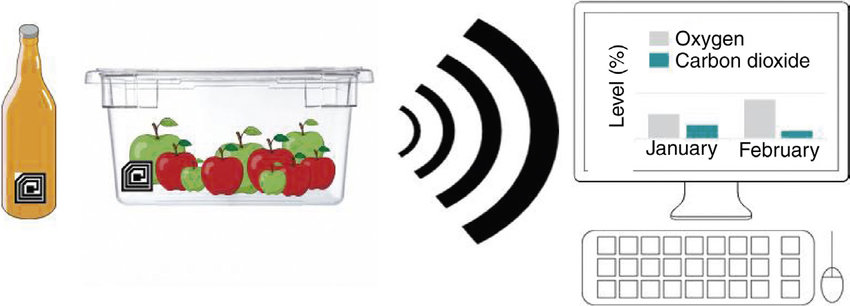
Indicators used in the intelligent meat packaging industry:
Indicators are devices integrated with the SP system to detect the presence, absence or amount of a particular substance or the rate of reaction between two or more substances by determining changes in product or packaging characteristics that reflect food quality status.
Time and temperature indicators:
Temperature fluctuations during the distribution of perishable food products lead to reduced quality and safety. Loss of nutritional, health and sensory qualities of meat products depends significantly on temperature and time. Thus, TTIs are designed to continuously monitor and record the complete or partial thermal history and show the residual durability of perishable products throughout the food chain.
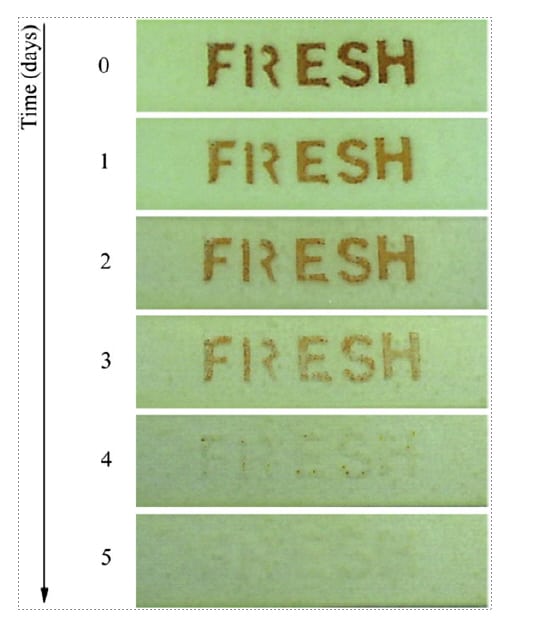 Color fading on the color-temperature gauge temperature indicator over a period of time at 25 ° C
Color fading on the color-temperature gauge temperature indicator over a period of time at 25 ° C
(Adapted from Galagan and Su)
New features:
Novelty markers are devices that are used to provide direct information about the quality or freshness of packaged foods as a result of physical or chemical alterations or microbial replication, depending on the information available on quality-determining metabolites that explicitly types of muscle foods, microbes, storage conditions and types of packaging are related. During storage, changes in the concentrations of metabolites such as glucose, ethanol, organic acid, CO2, TVB-N, adenosine triphosphate, and biogenic amines indicate spoilage of meat products.
Integrity indicators:
The composition of gases in packaging systems may vary based on the interaction of food products with the environment. Integrity indicators are a good tool for controlling gaseous compounds from food decomposition in a container, which can pose serious health risks to end users.
Non-invasive indicators are used as part of modified atmospheric packaging (MAP). To detect packaging leaks, integrity indicators provide information through comparisons with standard references or through visual colorimetric changes. These systems have been developed to test packaging integrity, which is a prerequisite for maintaining quality and safety standards for poultry and meat products. The reason for the damage to the integrity of flexible plastic packages is related to leakage of seals.
Connecting a sensor or leak indicator to the package helps maintain the integrity of the package throughout the production, transportation and distribution chain. Several researchers have worked on the packaging integrity of MAP products and determined critical leak sizes and related quality factors.
Sensors used in the intelligent meat packaging industry:
Sensors are devices used to identify, locate, or calculate energy or matter by providing signals to detect or quantify the physical or chemical properties to which devices respond. Different types of sensors are used in the meat industry to improve the quality and safety of meat by monitoring the quality indicators of products during storage and supply chain.
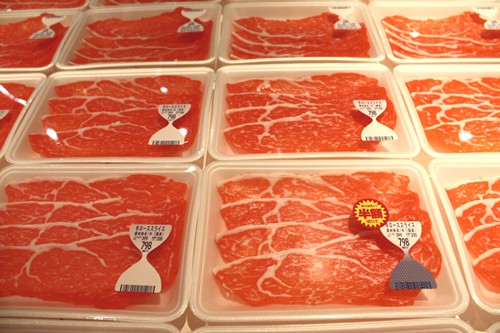
Electronic nose:
The electronic nose is a system used to mimic the mammalian olfactory system and was first developed in 1982 by Dodd and Persuad. Simple or complex odors are detected by a set of electronic chemical sensors with a suitable pattern recognition system and minor features.
Before that, the human nose was used for sensory analysis based on various olfactory factors. Although this is an expedient task, it is not very accurate and it was difficult to achieve repeatable results. In addition, the human nose is affected by many environmental factors or human physical and mental health. The e-nose is used to achieve repeatable quantities to identify and classify aromatic components in food products.
The main components of electronic projections include chemical sensor arrays, sample control mechanism, signal processing, conditioning, as well as pattern recognition arrays to identify simple or complex VOCs.
Biosensors used in intelligent meat packaging:
Biosensors are able to monitor the freshness of meat products in particular compared to freshness indicators. It consists of 2 basic parts: From bioreceptors and converters. The bioreceptor is specific to each metabolite and converts the converter of biochemical signals into a measurable electrical response.
Bioreceptors are used to detect, record and transmit information about biological reactions. They may be biological or organic substances such as antigens, enzymes, hormones, nucleic acids, or microbes. However, converters may be optical, calorimetric, electrochemical, or piezoelectric. An ideal biosensor should be very sensitive, accurate, small, cost-effective and easy to operate.
Biosensors are used in meat packaging to detect biogenic amines. Diamines, biogenic amines, and histamines in poultry, fish, and rainbow trout can be identified using a putrescine oxidase reactor with amperometric hydrogen peroxide electrodes.
Pospiskova et al. Developed a biosensor to detect biogenic amines and nitrogen compounds that were created by the decarboxylation of amino acids or by the transamination of amines, ketones, and aldehydes produced during microbial metabolism. Umuhumuza and Sun, meanwhile, developed a glucose sensor by modifying the gold electrode with a solution of nanogold and L-cysteine and coating the polyglutamate-glucose oxidase complex on the modified electrode for rapid detection of pork freshness.
Gas sensors used in intelligent meat packaging:
Gas sensors are devices used to detect gases in intelligent packaging. Two of the most common gas sensors (O2 sensor and CO2 sensor) are discussed below.
Oxygen sensors:
Recently, a number of sensors have been developed to detect O2 in meat products. O2 sensors are critical to evaluating the quality of packaged products, new product development, and process optimization. They are less complex and can be easily used in the meat packaging industry compared to other alternative tools that report the possibility of rapid, reversible, quantitative and real-time monitoring of non-destructive O2 levels in packaged products.
The presence of O2 inside the package helps the growth of aerobic microbes. Most O2 sensors are effective at concentrations of 0 to 100 kPa or at least 0 to 21 kPa (0 ٪ -21%) and have detection limits of 0.01 to 0.1 kPa. In general, these ranges are suitable for many meat packaging applications.
On the other hand, sensor materials such as polymers, dyes, additives and residual solvents sometimes have potential toxic effects. In most cases, the total amount required to create a single-package sensor is less than 1 mg, while the encapsulating polymer represents more than 95% to avoid the risks associated with residual solvents. Solvents should be used in the manufacture of sensors instead of in the food industry.
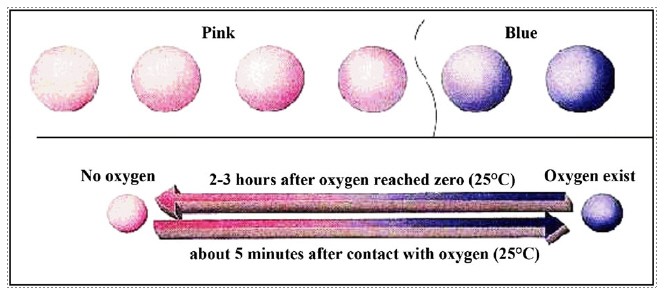
Carbon dioxide sensors:
CO2 sensors have been used to detect primary spoilage as well as measure CO2 levels in MAP and other food storage structures. Therefore, the market potential for low-cost and reliable CO2 sensors in the agri-food industry seems to be great. CO2 optical sensors have been developed to monitor the integrity of MA packets.
Optochemical assay techniques include assay based on adsorption-based colorimetry and fluorescence-based system through a pH-sensitive indicator and energy transfer approach through fluorimetric phase detection. Commercially, Severinghaus and non-distributed infrared (NDIR) sensors are used to detect soluble and gaseous CO2, respectively. However, the NDIR device is costly, bulky and prone to contamination and water vapor penetration. Hence, cheap and compact sensors are more preferred.
The Severinghaus CO2 sensor consists of a bicarbonate solution combined with a glass electrode covered by a thin CO2 permeable membrane. However, the membrane is impermeable to electrolytes and water. The sensor works on the principle that CO2 in aqueous solution is converted to carbonic acid and decomposed into protons and bicarbonate anions.
